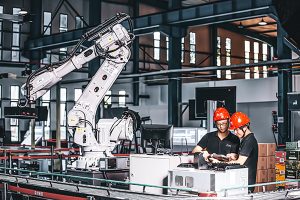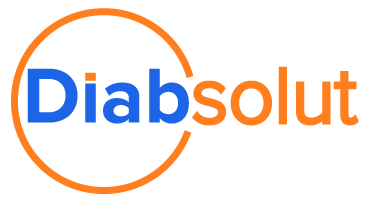Achieving Full ROI and Benefits from Your Manufacturing Solution Investments
Author: Erik Nelson

There’s a major emphasis in the manufacturing industry to make investments in digital solutions and technology to modernize operations.
As technology continues to improve, this push makes more and more sense; particularly when you look at some of the issues driving modernization — the economy, global supply chain issues, changes to customer expectations, and labor shortages — and how technology is being used to successfully address them.
This industry emphasis and the uptick in modern solution adoption is sometimes referred to as Industry 4.0, 5.0, X.0, etc.; or smart manufacturing. While the technology these movements reference continues to evolve, what needs to evolve with it, in order for that technology to achieve full ROI and benefits, is an organization’s mindset about how they operate.
- As technology and solutions become more connected, a business’ operations and how it views itself needs to become more connected as well
- This way of thinking relates back to principles behind lean manufacturing
- Understanding those principles and how they apply to modern solutions can help move an organization towards a holistic approach to operations and make their investments go further
In this blog we’ll review those principles and offer tips to help you achieve both better interconnectivity and ROI.
Lean Manufacturing, Your Manufacturing Solution, and Your Solution’s ROI
The ‘why,’ end goals, or principles behind modern manufacturing solutions and lean manufacturing are the same — less waste, continuous improvement, and empowering an organization’s teams and people to increase efficiency.
If you revisit the issues mentioned in the previous section (for example, keeping up with customer expectations), you can start to understand how today’s solutions simply involve using newer technology and tools to achieve those goals.
However, both then and now, an organization is expected to work together for maximum benefit realization. That really can’t be done unless departments and teams throughout your organization stop working in silos.
- Although different areas of your business have different functions, processes, and tasks, they’re all working towards the same goals, which can’t be done optimally unless you give people the right information and tools to do the best job possible
- Giving them relevant big picture data interpreted for their specific role takes out roadblocks in the way of achieving full optimization
- And giving leadership access to more accurate and complete information helps facilitate less waste, continuous improvement, and efficiency at a higher level
If you look at solution investment and implementation through this lens, it becomes clearer why having a “connected business” approach or mindset vs. a “business as usual” mindset greatly impacts the potential of a business as a whole and solution ROI.
Using That Mindset to Improve Your Investment Strategy and ROI
We recommend looking at solutions that can move your business away from having disparate systems.
Each area of your organization has an impact on how your business functions and your bottom line — but your customers should be the central driver to inform improvements and decisions in other areas of your business. So, moving towards a set of systems, especially systems designed to work together, being driven from a single customer-centric platform is the gold standard.
- Low-code and no-code technology will be easier for your organization to learn and take ownership of, which lowers long-term costs
- Make sure what you’re investing in is scalable and can be made to fit your organization’s needs as efficiently as possible
- Continuous improvement requires continuous change; make sure that change is easy to keep up with and you’ll be able to fully capitalize on those improvements
If you already have a customer-centric platform you might need to prioritize integration or streamlining your existing integrations. You want to make sure that you’re getting the most accurate data possible, which means making sure that everything is connected the way it should be.
- Investing in the implementation of solution components is equally important to the technology you invest in
- Stay away from implementation partners that rely heavily on customization over configuration
- Get advice on where to invest if your solution isn’t currently able to provide analytics using holistic data
- Spending in areas you think will have the biggest ROI instead of where your pain points are indicating will delay or limit your ROI and benefits
Next Steps
There’s a reason lean manufacturing principles are still used as an industry standard. They continue to be relevant, and if you’re investing in modern solutions to improve your operations, there’s no reason that with the right mindset, approach, and appropriate technology for your individual organization’s needs your business can’t be just as resilient.
If your organization is looking for assistance in either improving ROI, investing in the right solution, streamlining your solution’s integration, or planning for future solution investments — we’ve work worked with numerous manufacturing organizations to optimize their solutions and create personalized solution investment roadmaps.
If you’re looking for use cases to help with your planning, we have several manufacturing success stories on our website, which detail client projects, pain points, and solutions.
Please feel free to contact us for any solution advice, support, or services you may need.
Search
Trending Topics
- How Managed Services Drive Success – The Diabsolut Advantage
- Facing Challenges? Here’s How to Overcome the Top 5 Pain Points
- Understanding Personas to Improve Your Implementation of Software Solutions
- E24: SFS Roadmap Improvements for Each Persona – Java With Sugar Podcast
- Contractor Management: Building and Managing an Effective Field Service Workforce
- E23: How Salesforce Field Service Applies to Each Persona – Java With Sugar Podcast
- E22: Introduction to Field Service Personas – Java With Sugar Podcast
- The Role of Customer Success in a Professional Services Organization: A Path to Achieving Business Goals
- Addressing Customer Success Challenges in Today’s Market
- Field Service Efficiency During Workload Variations
